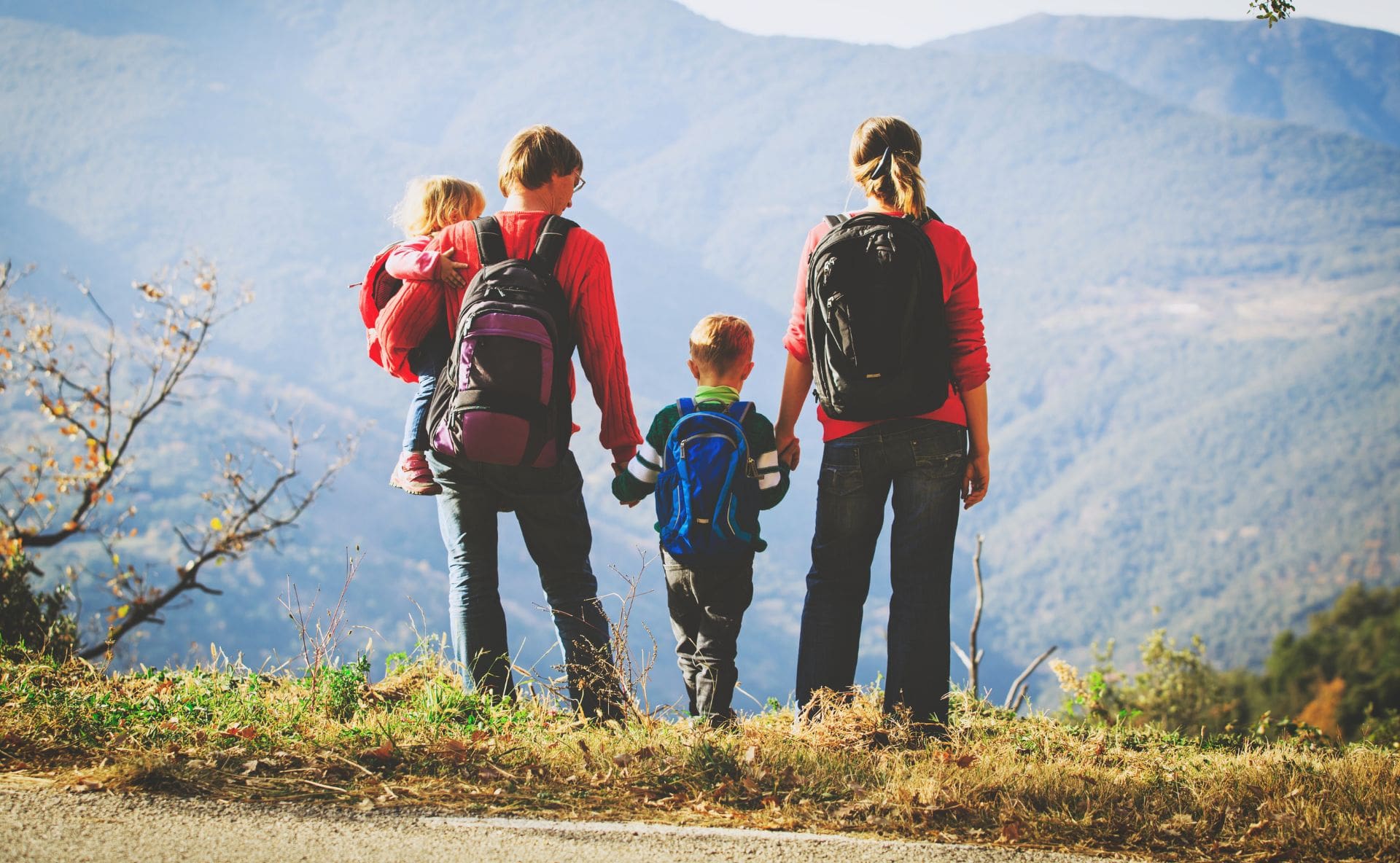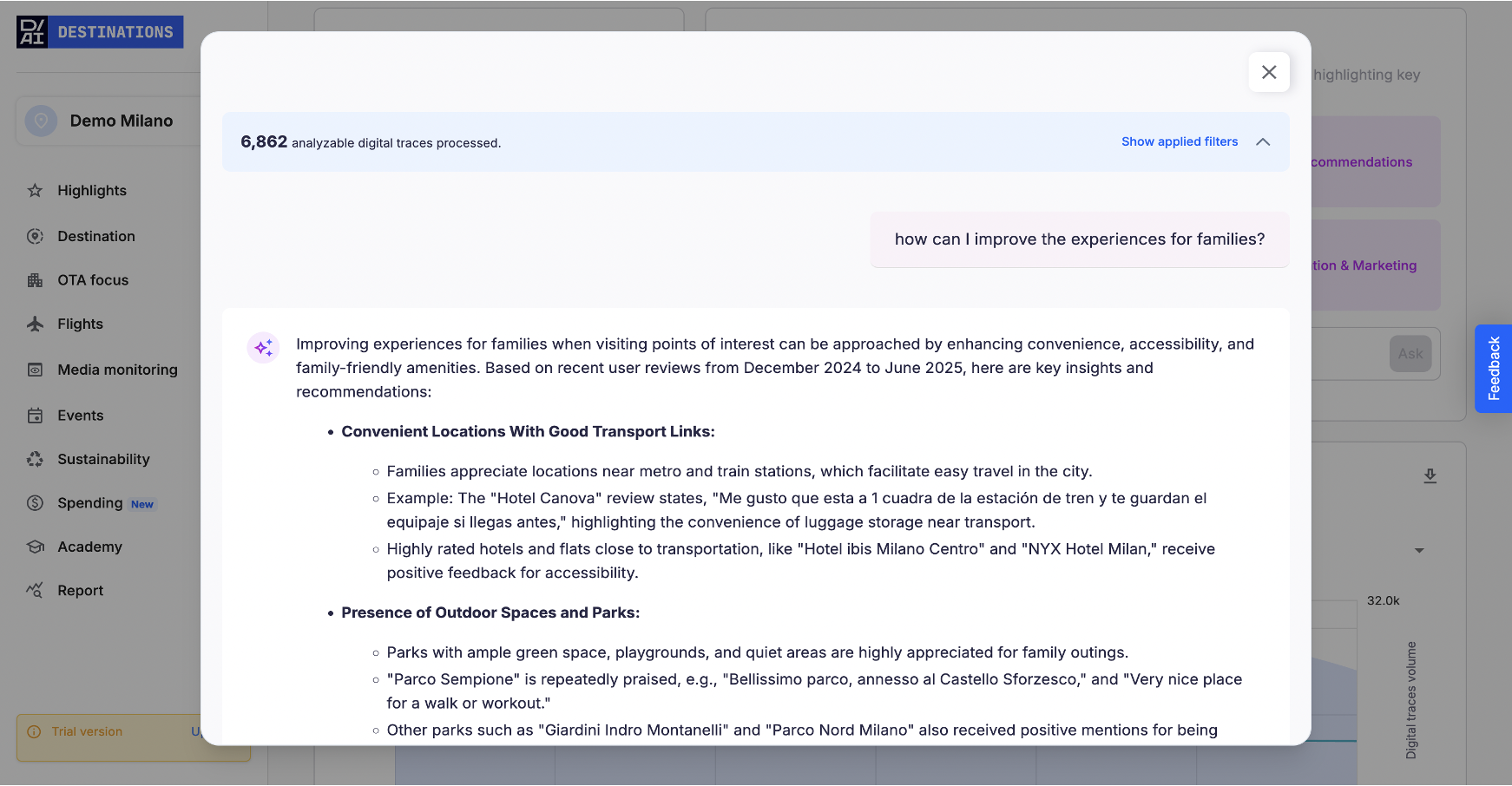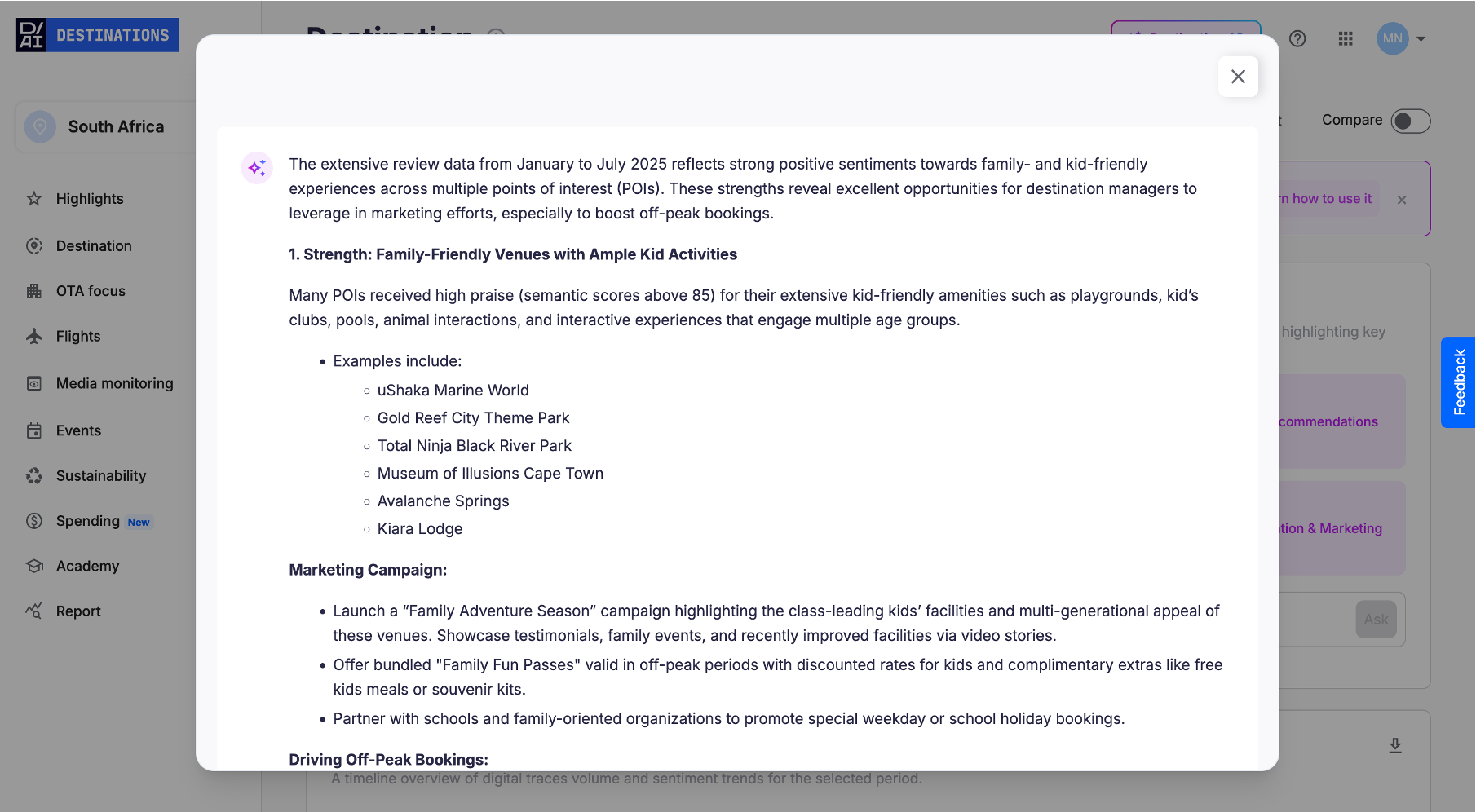More families are choosing trips that prioritise space, nature, and ease. The traditional checklist of landmarks and museums is giving way to a different kind of holiday—one that allows for unhurried time outdoors, safe spaces for children to roam, and experiences that can be enjoyed together.
Travel is no longer just a break from routine; for many families, it’s a way to reset, reconnect, and carve out moments of calm in places that feel manageable.
In 2024, the Family Travel Association found that 85% of parents were planning to travel with their children—many of them specifically looking for destinations with easy access to the outdoors.
A Booking.com survey reports that 56% of families prefer accommodation with outdoor features like gardens or proximity to parks. Meanwhile, DreamBigTravelFar found that 85% of family travellers say nature-based activities play a key role in how they choose where to go.
But what does this mean for destinations? It means that outdoor infrastructure, low-stress mobility, and a sense of emotional safety are no longer fringe benefits—they’re becoming central to how places are experienced, remembered, and recommended by travelling families.
In this blog, we’ll explore what makes a destination truly family-friendly when it comes to outdoor experiences—blending theory with on-the-ground insights and examples from real places.
Using D / AI Destinations—our all-in-one destination management and marketing platform, more specifically through its Smart Insights feature, we delved into visitor feedback to identify key trends, focusing on what families love most about outdoor destinations and where improvements are needed.
This feature analyses the destination’s actual reviews so we can pinpoint areas that matter most to families — from transport links and park accessibility to overall safety and comfort. The insights gathered help destinations make data-driven decisions, enhancing the experience and ensuring that families feel welcome, safe, and at ease.
Defining “families” in travel
When we talk about families in this blog, we refer broadly to groups travelling together where children are part of the equation. This can include:
- Nuclear families (parents and children)
- Multigenerational groups (grandparents, parents, kids)
- Single parents travelling with children
- Blended families and guardianship arrangements
While the needs and preferences of these groups can vary, they share common priorities around safety, ease of movement, and activities that engage children of different ages.
This diversity means that truly family-friendly destinations must be flexible and inclusive to meet a range of expectations.
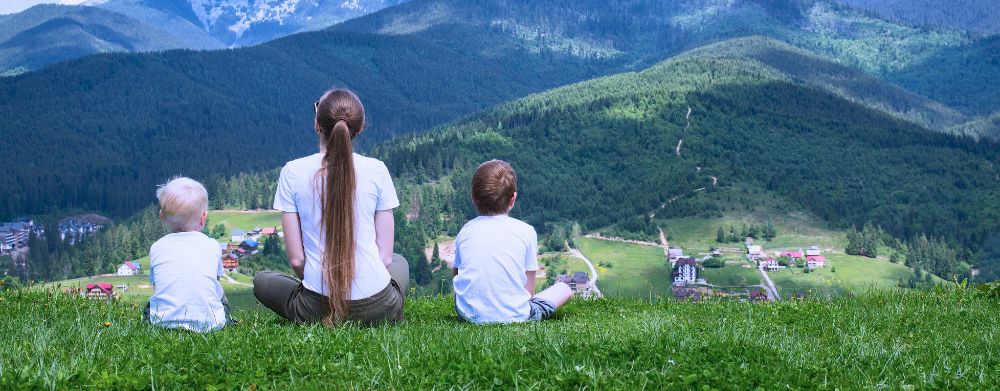
Why do families choose outdoor travel?
Families are increasingly choosing outdoor travel, drawn by a mix of practical benefits, emotional connections, and current tourism trends. Outdoor destinations provide ample space, safety, and freedom, allowing children to explore and roam more freely than in crowded urban settings.
In a post-pandemic world, the appeal of open-air, uncrowded environments has only grown. Western Slovenia, a region focused on Outdoor & Active Travel, highlights this trend: sentiment analysis from our D / AI Destinations platform shows “safety” scores above 90, underlining how essential security is for families when selecting vacation spots.
Outdoor travel encourages meaningful shared experiences. Whether hiking in the mountains, camping under the stars, or walking along the coast, these activities promote family bonding and immersive learning away from screens and daily distractions.
Health and wellness benefits are also significant. Activities like walking, cycling, and swimming provide fun ways to stay active, while time spent in nature helps reduce stress, boost mood, and improve mental wellbeing for both adults and children.
Child-friendly amenities add to the appeal. Many destinations offer family-focused accommodations, playgrounds, nature trails, and kids’ clubs designed to meet children’s needs while allowing parents to relax and enjoy their holiday.
Finally, outdoor travel has strong educational and environmental value. Visits to national parks, farms, and nature reserves introduce children to wildlife, ecosystems, and conservation efforts—helping parents instil values of sustainability and respect for the natural world.
Nature as a major travel driver in main European cities
The growing need to reconnect with nature seems to be a broader trend. It also emerged clearly in our recent study with Mabrian, an Almawave Group company, where we analysed summer travel trends in major cities and found that outdoor experiences are playing an increasingly central role in urban tourism.
Our analysis shows a clear upward trend in travel motivations related to outdoor and nature experiences—such as visits to urban parks, riverside walks, and green spaces. The “Nature & Outdoors” driver is becoming increasingly relevant, particularly in London, where it has risen by +5.5 percentage points compared to 2019. This makes it the third most-cited reason for visiting the city today. Similar growth is visible in Barcelona (+2.1 pts), Rome (+0.6 pts), and Berlin (+0.3 pts), confirming a broader shift towards more sustainable, experience-driven travel—even in urban environments.
This preference fits into broader travel trends such as “slow travel,” which encourages spending longer periods immersed in fewer locations, and “green travel,” which prioritizes eco-friendly practices. Both are increasingly important for families looking to travel thoughtfully and sustainably.
One of our recent analyses into Scandinavian destinations shows just how embedded outdoor travel has become—even in countries with colder climates.
- In Finland, nearly one in four reviews of local attractions (24%) mention open-air sites such as lakes, parks, and other natural settings.
- The trend is echoed in Sweden, where 26% of attraction-related reviews reference outdoor locations
- In Norway, with 16.4% of reviews highlighting similar sites
This data suggests a widespread and growing appetite for nature-based experiences across the region.
Finally, affordability is another factor that makes outdoor travel appealing for families. Camping, visiting public parks, and exploring nature reserves often come at low or no cost, offering budget-friendly options without sacrificing the quality or richness of the experience.
In sum, outdoor travel provides families with a blend of safety, freedom, connection, wellness, education, and sustainability—all key reasons why it continues to grow as a preferred choice among family travellers today.

What families want from outdoor travel
Choosing a destination is just the first step. For families, what really matters is how a place functions once they arrive — how well it fits into their needs, routines, and expectations. Here’s what families typically look for when it comes to outdoor-focused travel:
1. Flexibility and ease
Families want destinations that are easy to navigate, plan, and adapt to.
This includes things like flexible check-in/check-out times, short travel distances between key points (accommodation, activities, services), and clear, accessible information about what to do and how to get around.
For example, looking at the reviews in Milan for the past year, we see that one of the main points discussed by families in their reviews is staff friendliness and helpfulness, as well a check-in and check-out flexibility.


Source: Smart Insights, a feature of D / AI Destinations – Period of analysis June 2024 – June 2025
These seemingly small details become even more important when travelling with kids—especially for outdoor-focused trips that don’t always follow a set schedule.
Whether it’s returning from a day at the park later than expected or needing extra support navigating the city with strollers and gear, families value accommodations and experiences that adapt to their rhythm, not the other way around.
2. A balance of activities
Families tend to seek destinations that offer a balance between structured activities—such as guided walks or outdoor events—and unstructured time in open green spaces or lakeside areas where kids can explore freely. This combination not only supports the varying needs and energy levels within a family but also helps keep children engaged without becoming restless or overwhelmed.
3. Child-focused design
Beyond having playgrounds or kids’ menus, families value places that are clearly designed with children in mind. That could mean walking trails suitable for pushchairs, shaded rest areas, family toilets, or signs and information adapted for children. It shows a destination has thought beyond just “children welcome” and into “how can we make this great for children?”
4. Places to pause
Outdoor travel is active by nature, but families also need opportunities to slow down.
Destinations that offer quiet, scenic areas to rest — like picnic spots, shaded benches, or peaceful viewpoints — help parents and children alike reset during the day.
These pauses become part of the experience, not just a necessity.
5. Safe and welcoming atmosphere
Families notice the atmosphere immediately — how safe it feels, how friendly the signage and staff are, and how visible other families are. A destination that feels inclusive, well-kept, and welcoming earns trust quickly, especially for parents managing safety and logistics.
Safety goes beyond crime rates; it includes emotional comfort, clear wayfinding, reliable transport links, and approachable staff. Parks and outdoor play areas also play a key role, offering visible, accessible spaces where children can play and parents can relax.
For example, D / AI Destinations insights in Milan show that families prioritise destinations with strong transport links and nearby parks, as these features enhance safety and ease, making families feel more comfortable and at ease.
Source: Smart Insights, a feature of D / AI Destinations – Period of analysis June 2024 – June 2025
6. Opportunities for connection
When families travel, especially for outdoor experiences, they’re often looking for more than just fresh air and open spaces — they’re looking for moments of connection.
Whether it’s sharing a picnic, exploring a trail together, or simply watching the kids play while catching up as adults, outdoor settings offer a chance to slow down and reconnect. The ideal destination doesn’t just provide things to do — it creates the space for families to be present with each other, without the usual distractions of daily life.
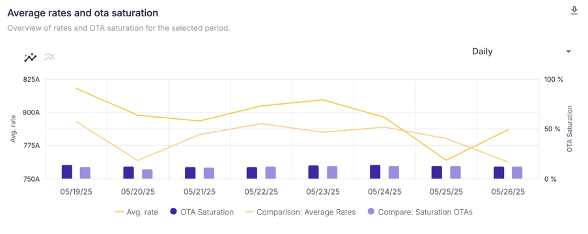
How to design and promote outdoor destinations for families
1. Prioritise safety and accessibility
Families look for environments that are easy to navigate with children, strollers, or elderly relatives. This means clear signage, accessible paths, shaded areas, and visible safety measures like lifeguards or enclosed play zones.
Tip: Use location data to understand how people move through your destination and identify pain points in accessibility.
2. Design for shared, flexible use
Open spaces that can serve multiple needs—picnic areas, nature trails, or waterfronts—are more appealing to families. These areas should allow for relaxation and play without being overcrowded or over-structured.
Tip: Monitor foot traffic data and peak-time usage to optimise space design and avoid overcrowding.
3. Offer low-pressure, high-reward experiences
Families often favour straightforward activities that need little advance planning—like a nature walk, a scenic viewpoint, or a visit to a farm. These offer the chance for spontaneous enjoyment while still being rewarding.
Tip: Analyse review data, such as digital traces, to see which “low-effort” activities are most mentioned positively by families.
4. Promote through the right channels
Families tend to research heavily before booking. Ensure your messaging is visible on family travel blogs, parenting forums, and via social ads that speak to safety, ease, and enjoyment.
Thanks to the new Smart Insights module in D / AI Destinations, you can ask the AI how to make the most of family reviews to improve your tourism messaging. Here’s an example based on data from South Africa.
Source: Smart Insights, a feature of D / AI Destinations – Period of analysis June 2024 – June 2025, Destination: South Africa
Tip: Use sentiment data (such as our Sentiment Score) to align your messaging with what families are actually looking for.
5. Highlight amenities and services that matter
Restrooms with changing tables, family-friendly dining, shaded picnic spots, and first-aid stations may not be flashy—but they’re essential.
Tip: POI data can help identify gaps in essential infrastructure, especially when compared to competitor destinations.
6. Accommodation
Hotels remain the most common option for families, but short-term rentals now make up around 14% of family trips, especially for larger groups seeking more space and flexibility.
Tip: Destinations can benefit from understanding these accommodation trends by working with both hotels and short-term rental platforms to ensure family needs are met across different lodging types.
7. Involve local stakeholders in family experience design
Partnering with local businesses and organisations can enhance outdoor offerings for families, especially those with young children. Engaging local parks, nature centers, farms, and recreational providers can help create a more comprehensive and appealing experience for families looking to explore the outdoors. These collaborations can include offering child-friendly nature trails, educational wildlife tours, or family-oriented outdoor workshops.
Tip: Use visitor engagement and attendance data to track how these family-focused outdoor initiatives are performing and fine-tune them for future seasons.
8. Use data to continuously improve
Regularly monitor visitor behaviour, satisfaction, and movement to refine your offer. Are families staying long enough? Are certain areas underused? Are there unexpected moments of delight worth building on?
Tip: Integrate POI insights, sentiment, popularity data (such as our Popularity Index, a proxy for footfall data), and feedback analytics to create a full picture of how families experience your destination.

Using insights to tailor destinations for families
D / AI Destinations provides detailed, granular insights into outdoor experiences, allowing you to filter specifically for families and various traveller types.
With advanced semantic analysis, you can understand exactly what aspects visitors appreciate or find lacking.
This enables you to receive tailored recommendations to enhance your destination’s appeal and create truly family-focused experiences that resonate with today’s travellers.


